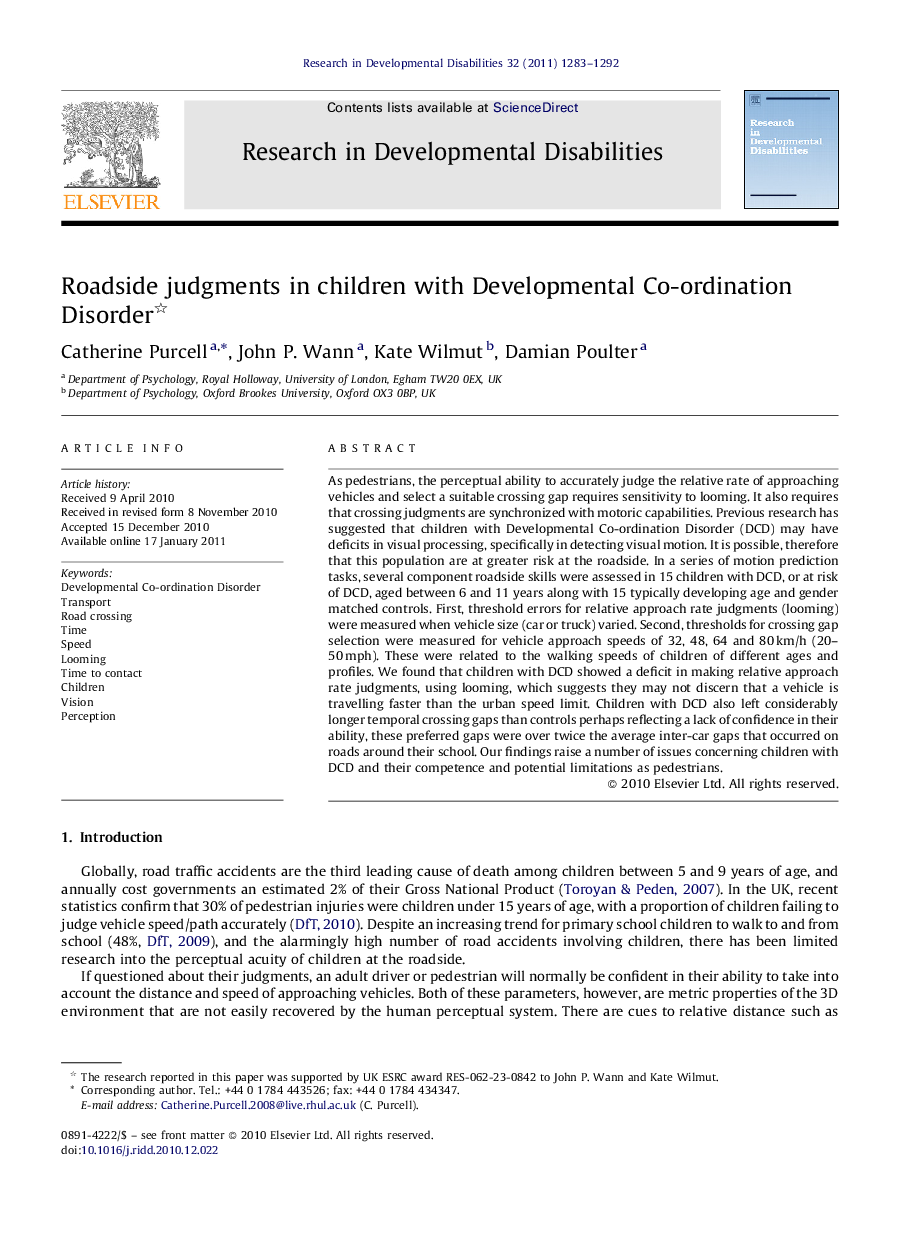| کد مقاله | کد نشریه | سال انتشار | مقاله انگلیسی | نسخه تمام متن |
|---|---|---|---|---|
| 372089 | 621953 | 2011 | 10 صفحه PDF | دانلود رایگان |

As pedestrians, the perceptual ability to accurately judge the relative rate of approaching vehicles and select a suitable crossing gap requires sensitivity to looming. It also requires that crossing judgments are synchronized with motoric capabilities. Previous research has suggested that children with Developmental Co-ordination Disorder (DCD) may have deficits in visual processing, specifically in detecting visual motion. It is possible, therefore that this population are at greater risk at the roadside. In a series of motion prediction tasks, several component roadside skills were assessed in 15 children with DCD, or at risk of DCD, aged between 6 and 11 years along with 15 typically developing age and gender matched controls. First, threshold errors for relative approach rate judgments (looming) were measured when vehicle size (car or truck) varied. Second, thresholds for crossing gap selection were measured for vehicle approach speeds of 32, 48, 64 and 80 km/h (20–50 mph). These were related to the walking speeds of children of different ages and profiles. We found that children with DCD showed a deficit in making relative approach rate judgments, using looming, which suggests they may not discern that a vehicle is travelling faster than the urban speed limit. Children with DCD also left considerably longer temporal crossing gaps than controls perhaps reflecting a lack of confidence in their ability, these preferred gaps were over twice the average inter-car gaps that occurred on roads around their school. Our findings raise a number of issues concerning children with DCD and their competence and potential limitations as pedestrians.
Research highlights▶ Decreased sensitivity to vehicle approach was found amongst children with DCD, resulting in large errors in judging the relative speeds of two cars. ▶ Children with DCD showed decreased sensitivity to tau in estimating collision times, resulting in a bias, where large slow trucks were perceived as travelling faster than small fast cars. ▶ The temporal crossing gaps chosen by all children became shorter as the approach speed of the car increased, which decreases their margins for error. ▶ To compensate for significantly slower walking speeds, children with DCD selected longer temporal crossing gaps across all approach speeds. However, this could be problematic as their preferred crossing time gaps were twice the average inter-car gaps typically experienced at the roadside.
Journal: Research in Developmental Disabilities - Volume 32, Issue 4, July–August 2011, Pages 1283–1292